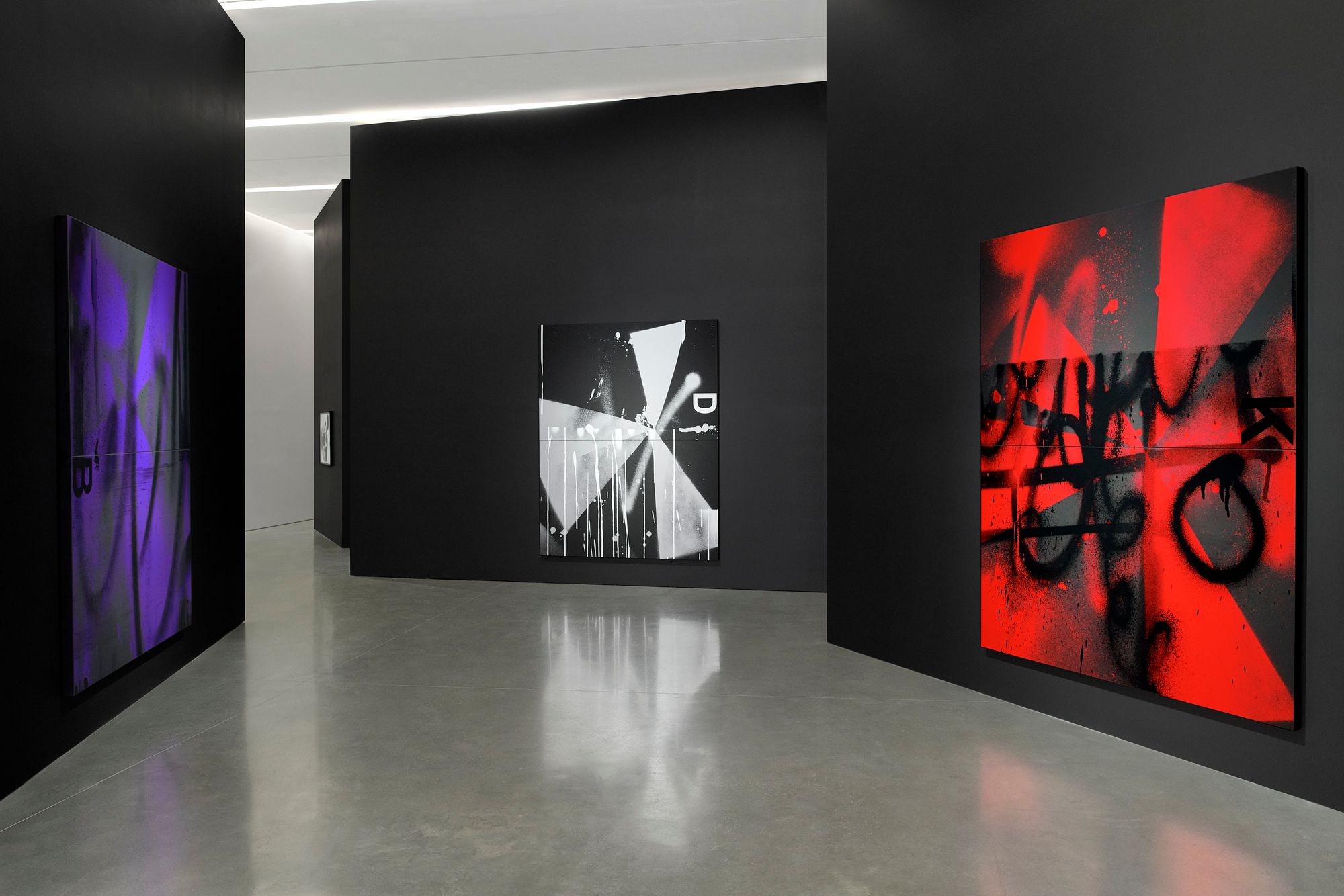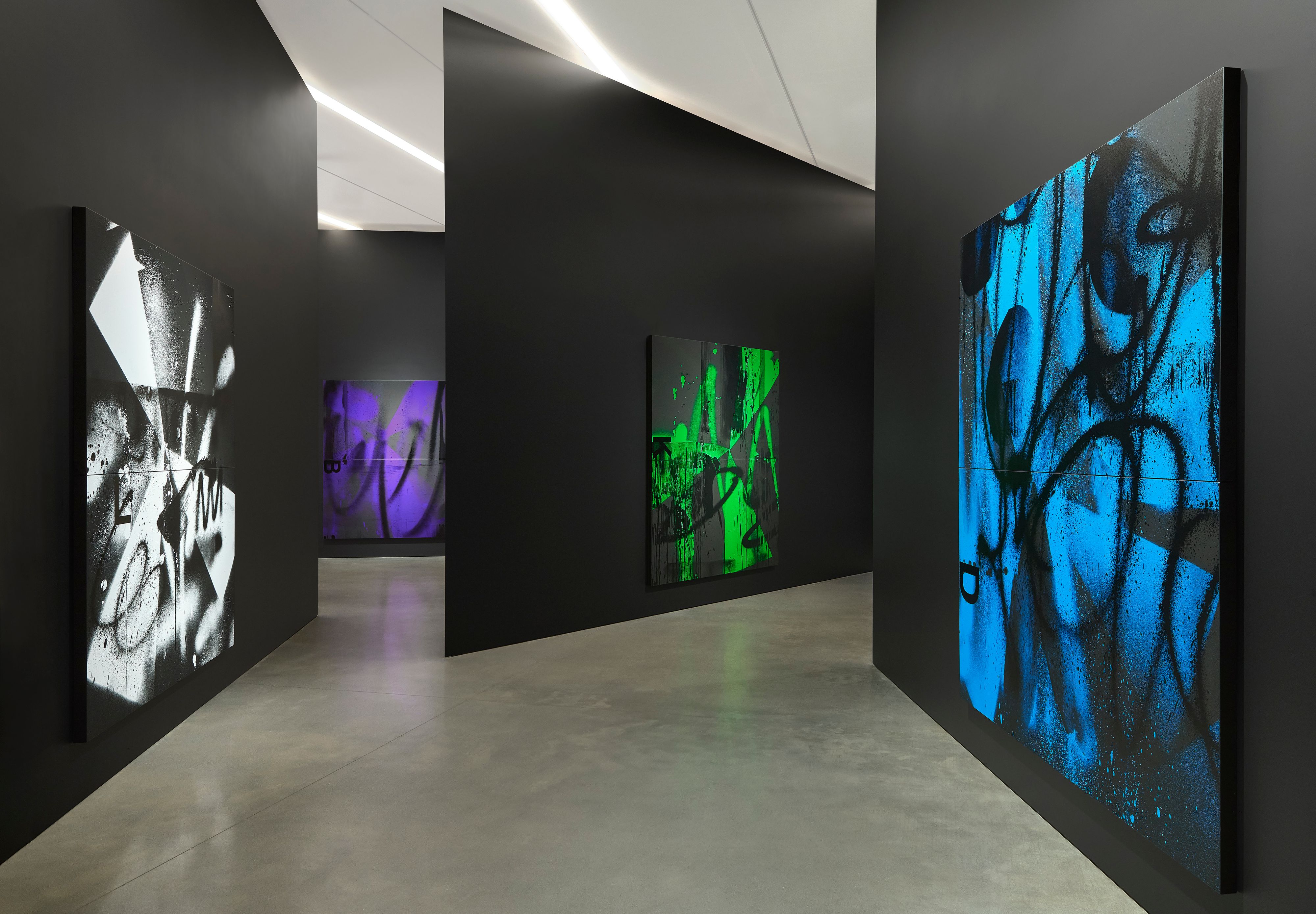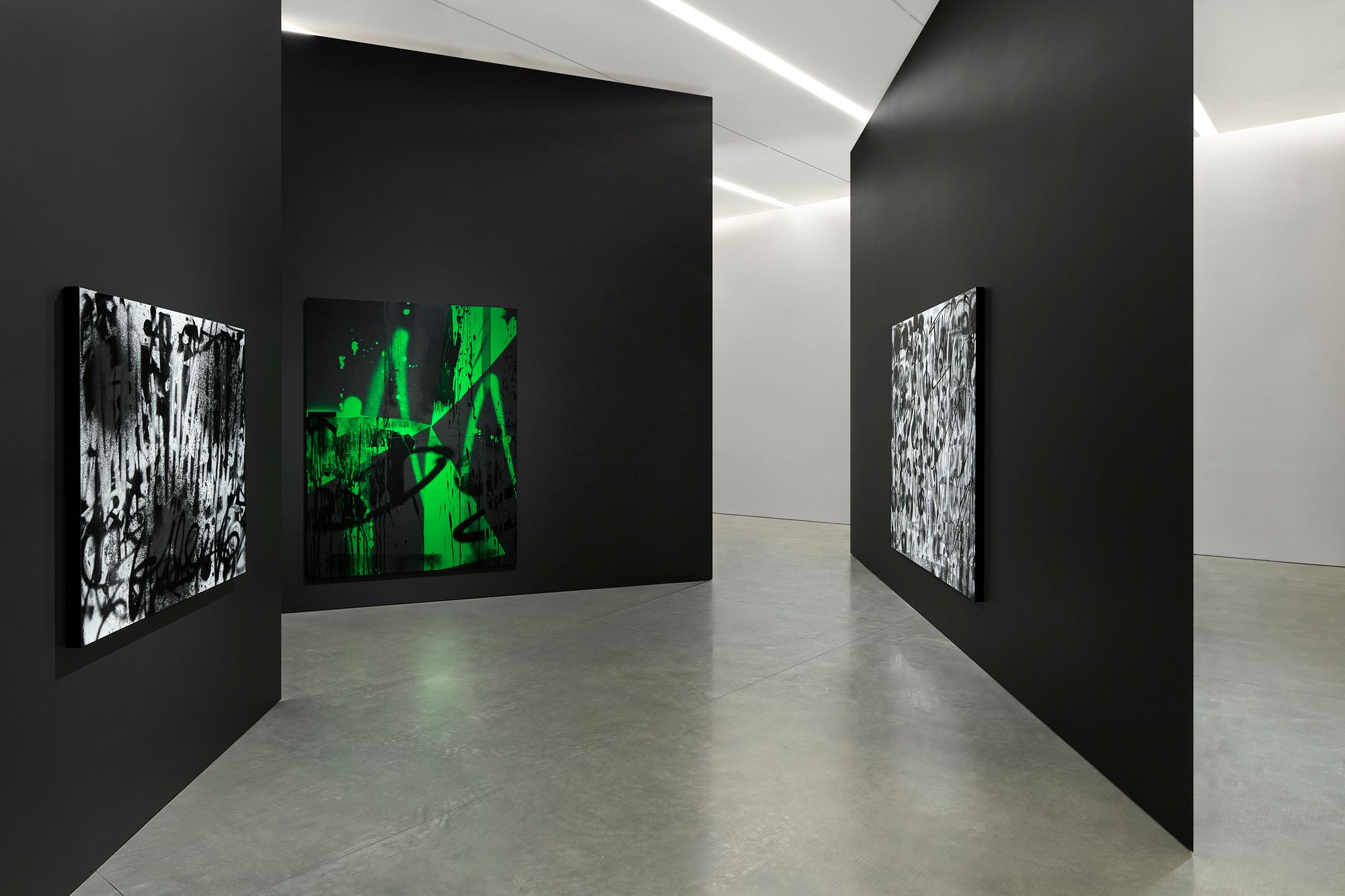
Installation view of Adam Pendleton: An Abstraction, 540 West 25th Street, New York, NY 10001 May 3 – August 16, 2024. Photography courtesy Pace Gallery.

Installation view of Adam Pendleton: An Abstraction, 540 West 25th Street, New York, NY 10001 May 3 – August 16, 2024. Photography courtesy Pace Gallery.
An abrupt spatial shift happens when you step from the wide, wind-swept avenues of Chelsea into the ground floor PACE gallery hosting Adam Pendleton’s An Abstraction: expansive streets brightly lit by the spring sun suddenly give way to the distinctively dark and disjointed environment of the multidisciplinary American artist’s latest exhibition, his first at the gallery in 10 years. Specially constructed triangular black walls carve out space for the drawings and paintings that populate the show, fragmenting the exhibition and rendering it impossible to take in all at once. This architectural intervention means viewers must carefully navigate through the fractured space, creating singular, focused encounters with the individual works. Beyond encouraging attentive viewing, it has the additional effect of foregrounding relationality. Without a coherent “whole” (the exhibition) to ground the encounter with its constituent “parts” (the artworks), people are driven to search for and develop connections between not only the works themselves, but also the world beyond.
The artworks perform a parallel process — each work refuses easy individuality to instead position itself relationally, demanding to be seen in a broader context. At first glance, works like Untitled (Days) (2023-24) mistakenly seem to offer unmediated access to the artist’s hand, featuring the unmistakable texture of spray paint crisscrossed by arching lines and sketched forms in oil or ink. Black Dada (D) (2024) and its companions in the "Black Dada" series appear formally similar but go even further in their pursuit of connectedness. One way they do so is embodiment: each painting is a diptych, two parts inextricably conjoined. The other is adornment: all feature a single neat and very clearly printed letter across the canvas (in this case, D). Contrasting with the otherwise hand-painted appearance of the works, this rogue element breaks through the initial impression of manual craftsmanship to instead point to the underlying, complex production: painting and drawing on paper is imaged and processed before being rendered into a silkscreen that is then used to apply ink and gesso across canvas.

Portrait of Adam Pendleton by Matthew Septimus.
The silkscreen process also manifests further connections. The printed letters of the Black Dada paintings, for example, help to tie the works into Pendleton’s broader practice. Each letter is drawn from the phrase “Black Dada,” referring not only to the series itself, but the artist’s longstanding investigation of the concept. Described by the artist as a method to “talk about the future of the past,” Black Dada traces an expansive genealogy of art and philosophy, from the early 20th century Dada movement to today, culminating in a project that includes artworks but also expands beyond into exhibitions and publications, fostering ties between a broad range of thinkers, musicians, and artists including W.E.B. DuBois, Joan Jonas, Sun Ra, and Adrian Piper. It also highlights a deeper link between the drawings and the painting. While the drawings are in fact as they appear — ink, spray paint, and oil applied to paper — they become more than just stand-alone works; they also function as a form of disegno, holding the potential to burst forth into the fully-fledged painting.
Through this strategy, Pendleton’s works refute their own individuality to instead assert their interconnection. While this empowers them to act beyond the frame — drawing from each other, the artist’s practice and past works, and the wide-ranging philosophy and thought of Black Dada — it also involves a dialectical drawback: though the relentless pursuit of relationality strengthens the artwork’s desire to tap into an excess outside of itself, it can simultaneously render it less legible and able to stand on its own. In the context of this exhibition, the risk is countered by the specific controlled environment, but what happens after? Following the close of the exhibition the works, presumably sold, will be separated to be shipped, stored, and shown by their owners. When each work must be seen in relation to all the others in order to be understood on its own, as they are split, their connections, if they remain at all, become less clear. While here the strategy pays off — and as much as the works do clearly retain their referentiality — its future remains uncertain, and it is, in a sense, an unresolvable problem at the heart of Pendleton’s gambit.

Installation view of Adam Pendleton: An Abstraction, 540 West 25th Street, New York, NY 10001 May 3 – August 16, 2024. Photography courtesy Pace Gallery.

Installation view of Adam Pendleton: An Abstraction, 540 West 25th Street, New York, NY 10001 May 3 – August 16, 2024. Photography courtesy Pace Gallery.